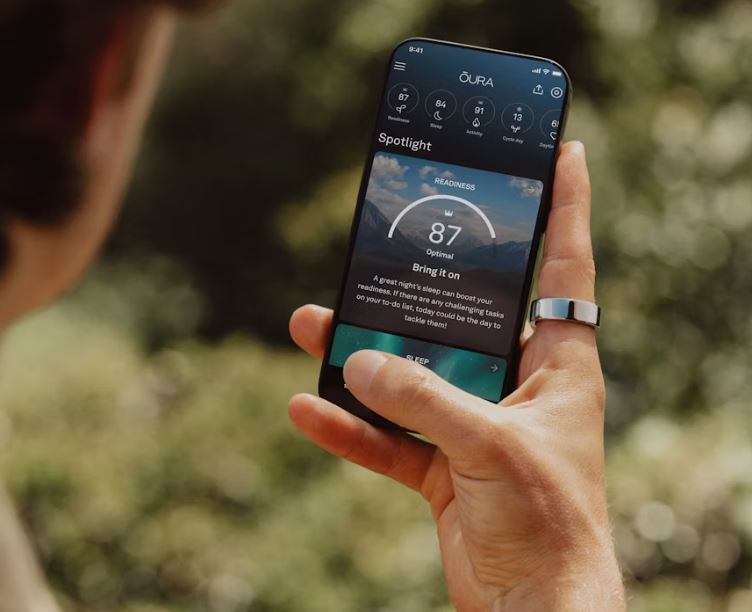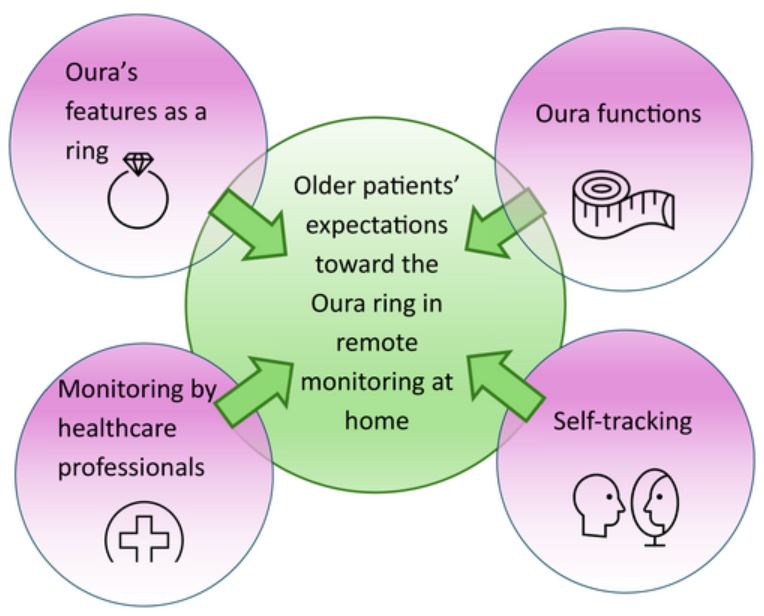Melika Azim Zadegan: My Second PhD Study Results: Older Patients’ Expectations of Smart Rings in Remote Monitoring at Home
In my previous blog post, I reflected on the first study of my PhD, where we found that many older neurological patients were willing to accept remote monitoring (RM) at home even before its implementation. Those living with a caregiver or having higher education levels were more open to RM, while age, gender, and place of residence did not make a significant difference.
In this post, I focus on the second study of my PhD, which builds on these findings by exploring how older patients perceive and expect wearable smart rings before such technologies are implemented and introduced in their care.
Why studying patient expectations before implementation matters
Consumer wearables such as smart rings, although primarily designed for well-being tracking, are now being considered for healthcare use, particularly to support ageing populations. They promise to strengthen continuity of care by enabling patients to be monitored at home and by promoting ageing in place. However, the success of these technologies depends not only on technical performance but also on how patients perceive and expect them before they become part of daily care routines.
During the literature review, we found that most previous studies had focused on patients’ experiences after using such technologies. In this study, we examined older patients’ perceptions and expectations before use to understand what motivates or concerns them at an early stage. Studying expectations helps identify what is needed for successful adoption and sustained engagement once technologies are introduced.
How the study was conducted
The study was carried out in the Neurology Department of Kuopio University Hospital in collaboration with the University of Eastern Finland, Business School. We interviewed ten older neurological patients undergoing diagnostic procedures for idiopathic normal pressure hydrocephalus (iNPH) to explore how they perceived and expected the use of a smart ring for home-based remote monitoring.
The Oura Ring, a Finnish-designed device originally created for well-being tracking, was used as an example of a potential future remote monitoring tool. The ring measures sleep, heart rate, body temperature, and physical activity, providing continuous insights into daily patterns.

During the interviews, patients were asked how they thought such a device could support their health and what kinds of benefits or concerns they anticipated. The aim was to capture their expectations before any real-life implementation. Data were analysed qualitatively to identify key patterns and themes that reflected patients’ perspectives.
What we found
We found four main themes in how older patients perceived and expected the use of the Oura Ring for home-based remote monitoring: the ring’s features, its functions, self-tracking, and monitoring by healthcare professionals.

Patients’ views extended beyond technical aspects, as they hoped the Oura Ring could support not only their health but also their broader well-being by helping them manage their condition proactively and notice changes early.
Many perceived themselves as active and motivated participants in their care, open to both tracking their own health and being monitored by healthcare professionals, as long as the technology remained simple and easy to use. The possibility for healthcare professionals or caregivers to access their data was often seen as reassuring and motivating, giving them a sense of being cared for and supported rather than a loss of privacy.
Concerns and reflections
While most patients expressed interest and openness, they also raised practical and ethical concerns. Some were uncertain about managing the device independently, especially if it required smartphone use or frequent charging. Others questioned the accuracy of the data and how it would be interpreted.
Privacy and data access were among the most common concerns. Patients wanted clear information on who could view their data, how securely it would be stored, and whether they would receive feedback or explanations about the results. These reflections show that older adults approach remote monitoring thoughtfully, emphasizing the importance of clarity, trust, and usability in achieving meaningful and sustained engagement with digital health technologies.
Toward meaningful and sustained engagement
The study highlights that introducing new technologies, including wearable devices for remote monitoring at home, is not only a technical process but also a social process. Successful implementation requires involving patients early in the design and planning stages to ensure that the technology is acceptable, user-friendly, and relevant to their everyday lives.
Older adults are open to innovation when it is explained clearly and when they see how it supports their independence and sense of control. They value tools that simplify care rather than complicate it. For healthcare professionals, this means being prepared to integrate easy-to-use devices into care routines while offering guidance and reassurance about data management and reliability.
When these conditions are met, digital health tools can strengthen relationships between patients and professionals instead of replacing them. The aim is not only technology adoption but also sustained engagement and meaningful use that benefits both sides.

Doing research is never a solitary effort. This study would not have been possible without the generous participation of the patients who shared their time and perspectives and the dedicated collaboration of our research team at the University of Eastern Finland, Business School, and Kuopio University Hospital. I am deeply grateful to everyone involved for making this work possible.
Looking ahead
This study represents the second article of my PhD project, which examines the future adoption of remote monitoring technologies from both patient and healthcare professional perspectives. While this study focused on older patients’ expectations before implementation, the next one will explore how healthcare professionals understand remote monitoring in their daily work.In my next blog post, I will reflect on these findings and share how professionals’ perspectives contribute to a more complete understanding of remote monitoring in practice.
Stay tuned!
My Research article:
M. Azim Zadegan, E. Aromaa, T. Montonen, R. Sahlström, P. Eriksson, and V. Leinonen, “Smart Rings in Remote Monitoring at Home: Older Patients’ Perceptions and Expectations,” Health Expectations (2025; 28: 1–10). https://doi.org/10.1111/hex.70407